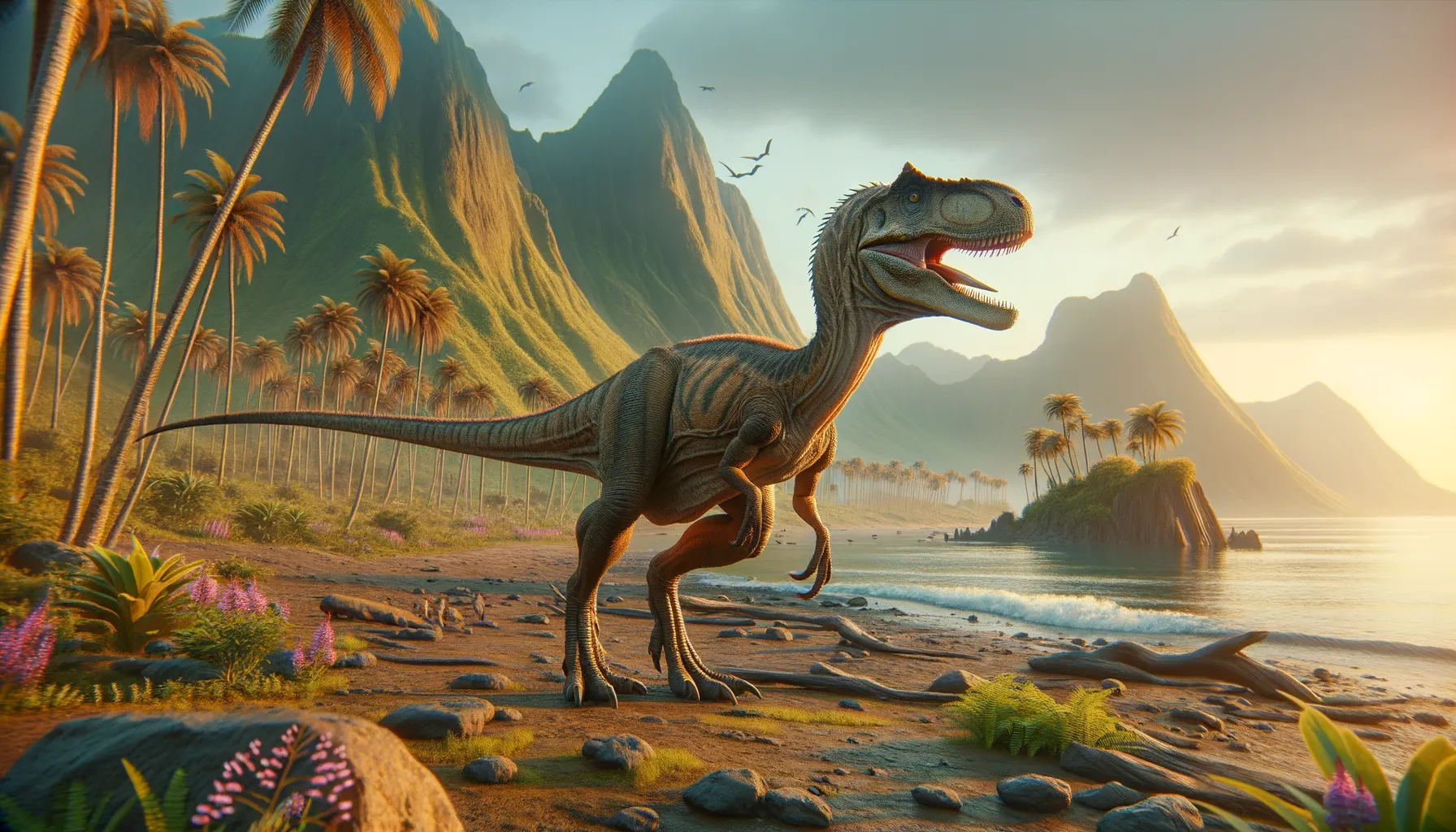
Laevisuchus
Swift predator from ancient India.
Period
Cretaceous
Length
Around 1.2 meters long, about half the length of a human.
Height
Roughly 0.6 meters tall, comparable to a large turkey.
Weight
Approximately 15 kilograms, very light for its size.
Laevisuchus was a small, agile dinosaur from the Cretaceous period. It is noted for its lightweight build, making it an adept hunter and scavenger. Discovered in India, this theropod adds to the fascinating diversity of dinosaurs that roamed the ancient subcontinent. Its fossils have helped scientists piece together more about the evolutionary history during that time. While information is sparse, it provides valuable insights into theropod evolution towards modern birds.
Diet
Laevisuchus primarily fed on small animals, including insects and perhaps small vertebrates. Its diet would have included whatever was available, allowing it to take advantage of its speed and agility.
Hunting
As a likely adept hunter, Laevisuchus would have relied on speed and stealth to catch its prey. It may have scoured the forest floor for small animals, using careful timing to capture them.
Environmental challenges
Living during the late Cretaceous, Laevisuchus faced challenges such as changing climate and varying food availability. The ecosystem was dynamic, with competition from other carnivorous dinosaurs. Adaptations such as its speed would have been crucial in navigating these challenges and maintaining its place in the food chain.
Speed
Likely quick on its feet, adapted for agility.
Lifespan
Estimated to be similar to small theropods, around 10 to 20 years.
First discovery
First discovered in the Lameta Formation, India, in the 1930s.
Fun Facts
- Laevisuchus was a small theropod dinosaur that lived around 70 million years ago during the Late Cretaceous period.
- It was discovered in what is now India, providing evidence of diverse dinosaur species on the Indian subcontinent.
- The name Laevisuchus means 'light crocodile,' reflecting its lightweight, agile body.
- Laevisuchus is part of the Abelisauridae family, a group of carnivorous dinosaurs known for their short limbs and large heads.
- This dinosaur was likely a fast runner, using its speed to hunt small prey or escape predators.
- Fossils of Laevisuchus are rare, and its exact size and appearance remain topics of ongoing scientific research.
- Laevisuchus helps scientists understand the unique ecosystems that existed on isolated landmasses millions of years ago.
Growth and Development
Like many theropods, Laevisuchus would have hatched from eggs and undergone significant growth during its juvenile years. It likely started life with softer bones, which gradually hardened as it matured. Rapid growth rates were necessary to reach a size where it could fend for itself in a competitive environment.
Habitat
Laevisuchus inhabited forested regions with lots of underbrush, providing ample cover for hunting. The environment was likely warm and humid, with a diversity of plant and animal life. These conditions would have influenced its lifestyle and survival strategies.
Interaction with other species
Laevisuchus would have interacted with various other species, both as predator and prey. Its small size may have sometimes made it a target for larger carnivores. In the diverse ecosystems of ancient India, these interactions were crucial for its survival.
Natural lifespan
Likely lived around 10 to 20 years in the wild.
Reproduction
Reproduced oviparously, laying eggs in nests that were likely hidden or camouflaged. Parents may have guarded their nests to protect against the many dangers of their environment.
Social behaviour
Laevisuchus may have been a solitary creature, but like many theropods, could have formed small groups or pairs during certain seasons for mating. Its social interactions likely involved competition for resources and territory.
Fossil locations
Laevisuchus fossils were first discovered in the Lameta Formation of India, which is known for preserving various dinosaur fossils. These locations have provided valuable insights into Cretaceous biodiversity in the Indian subcontinent.
